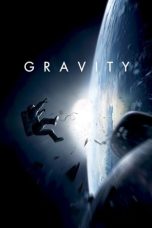- Source: Into Thin Air
Into Thin Air: A Personal Account of the Mt. Everest Disaster is a 1997 bestselling nonfiction book written by Jon Krakauer. It details Krakauer's experience in the 1996 Mount Everest disaster, in which eight climbers were killed and several others were stranded by a storm. Krakauer's expedition was led by guide Rob Hall. Other groups were trying to summit on the same day, including one led by Scott Fischer, whose guiding agency, Mountain Madness, was perceived as a competitor to Hall's agency, Adventure Consultants.
Summary
Krakauer describes the events leading up to his eventual decision to participate in an Everest expedition in May 1996, despite having mostly given up mountain climbing years before. Krakauer was a journalist for the adventure magazine Outside, and initially his intention to climb Everest had been purely professional. He had planned to climb only as far as the mountain's base camp, and to report on the commercialization of the mountain. However, the idea of going to Everest reawakened his childhood desire to climb the mountain. Krakauer asked his editor to put off publishing the story for a year so that he could train for a climb to the summit.
From there, the book moves between describing events that took place on the mountain, and the unfolding tragedy, which occurs during the push to the summit. (The 1996 expedition season saw eight recorded deaths, including that of Krakauer's guide, Rob Hall. It also saw the third-highest recorded number of deaths on the mountain in a single day. The April 2015 Nepal earthquake had caused the most, at 21.) Krakauer concludes that essential safety methods that had been adopted over the years by experienced guides on Everest were sometimes compromised by the competition between rival guiding agencies to get their respective clients to the summit.
Controversy
Krakauer's recounting of certain aspects of the climb generated criticism, both from some of the climb's participants and from fellow mountaineers such as Galen Rowell. Much of the criticism centers on Krakauer's account of how Anatoli Boukreev, an experienced Kazakh high-altitude climber and guide for Scott Fischer, had handled the climb. Boukreev had descended the summit before his clients did, ostensibly out of concern for their safety, in order to prepare for potential rescue efforts. Although Krakauer acknowledged that Boukreev's efforts after descending the mountain were heroic (he engaged in repeated solo rescue efforts, saving at least two climbers' lives), he questioned Boukreev's judgment during the climb, in particular his decision to descend from the summit ahead of his clients, his decision not to use supplementary oxygen, his choices of gear on the mountain and his interactions with clients. Boukreev provided a rebuttal to these claims in his 1997 book, The Climb.
Mountaineer Galen Rowell criticized Krakauer's account, citing numerous inconsistencies in his narrative, and observed that Krakauer had been asleep in his tent while Boukreev was rescuing other climbers. Rowell argued that not only were Boukreev's actions heroic but his judgment was also prescient: “[Boukreev] foresaw problems with clients nearing camp, noted five other guides on the peak [Everest], and positioned himself to be rested and hydrated enough to respond to an emergency. His heroism was not a fluke."
Krakauer's account has also been criticized for omitting to mention that the team members were receiving accurate daily weather forecasts and knew about the impending storm.
In Krakauer's 1999 paperback edition of Into Thin Air, he addresses some of the criticisms in a detailed postscript.
Adaptation
Film rights for Into Thin Air were purchased by Sony almost immediately after the book's publication. The book was adapted into the TV movie Into Thin Air: Death on Everest (1997), starring Peter Horton as Scott Fischer and Christopher McDonald as Krakauer. The book and the film both contain the same strong editorial viewpoint regarding the fundamental causes of the tragedy, although the film differs sharply from the book in details regarding responsibility.
The 2015 film Everest, by director Baltasar Kormákur, depicts the same events as the book, with actor Michael Kelly portraying Krakauer. According to Kormákur, it is not based on Krakauer's book.
See also
List of people who died climbing Mount Everest
After the Wind, a 2014 book by Lou Kasischke
The Climb, a 1997 book by Anatoli Boukreev
References
Further reading
Boukreev, Anatoli; DeWalt, G. Weston (June 28, 1997). The Climb: Tragic Ambitions on Everest. St. Martin's Press. ISBN 9780312168148.
This account critically analyzes the Adventure Consultants team and provides an alternative explanation for the events of those few days on Everest. Krakauer has rebutted the claims of this book in a postscript to the 1999 printing of Into Thin Air.
Ratcliffe, Graham (2011). A Day to Die For. UK: Mainstream Publishing. ISBN 9781845966386.
This book puts forward evidence that detailed weather forecasts were being received by several groups well in advance of their teams' summit attempts. These forecasts highlighted clearly the oncoming strong storm that struck the mountain on 10th/11th May causing the tragedy. While most of Ratcliffe's comments are directed towards the two expedition leaders for ignoring the forecasts and continuing on the summit attempts, thereby exposing clients to such high risk, he also makes clear that in his view, Krakauer and many others' description of the storm as "sudden and unexpected" is wholly inaccurate. Furthermore, Ratcliffe suggests that Krakauer, by not mentioning the forecasts, did not produce an accurate or adequately researched account.
Gammelgard, Lene (2000). Climbing High: A Woman's Account of Surviving the Everest Tragedy. New York: Perennial. ISBN 978-0-330-39227-3.
The first-hand experience of Lene Gammelgard, of Fischer's expedition.
Trueman, Mike (2015). The Storms: Adventure and Tragedy on Everest. UK: Baton Wicks Publications. ISBN 978-1898573944.
Mike Trueman, a member of the 1996 International Polish South Pillar Team, was at Camp 2 as the 1996 Everest tragedy unfolded. He was asked to descend to Base Camp where he coordinated the rescue effort. His book published in May 2015 complements the story related in Into Thin Air.
Weathers, Beck; Michaud, Stephen G. (2000). Left For Dead: My Journey Home from Everest. New York: Villard. ISBN 978-0-375-50404-4.
A first-hand account of Hall's expedition.
Dickinson, Matt (1997). The Death Zone: Climbing Everest Through the Killer Storm. Hutchinson. ISBN 978-0-09-180239-4.
A first-hand account of the storm's impact on climbers on the mountain's other side, the North Ridge, where several climbers also died. (Later republished as: Dickinson, Matt (2000). The Other Side of Everest: Climbing the North Face Through the Killer Storm. New York: Crown. ISBN 978-0-8129-3159-4.).
Kasischke, Lou (2014). After the Wind: 1996 Everest Tragedy, One Survivor's Story. Good Hart Publishing. ISBN 978-1940877006.
The first-hand account of Lou Kasischke, of Rob Hall's expedition. Kasischke details the events surrounding the summit attempt as well as the decision that saved his life.
External links
Into Thin Air -- the original article by Jon Krakauer published in Outside magazine in September 1996 (saved by Archive.org)
Interview with Peter Horton on the TV Movie
Into Thin Air: Death on Everest at IMDb
NPR interview with Jon Krakauer, May 1996
Kata Kunci Pencarian:
- Tate Donovan
- Bencana Gunung Everest tahun 1996
- Jessica Meir
- Jubah tembus pandang
- Gunung Kīlauea
- Tujuh Puncak
- Vivien Yeo
- Patrick Tang
- Hilangnya Amy Wroe Bechtel
- Penghargaan Pulitzer untuk Nonfiksi Umum
- Into Thin Air
- Into Thin Air: Death on Everest
- Into Thin Air (disambiguation)
- Thin Air
- Jon Krakauer
- Alfred Hitchcock Presents season 1
- Out of Thin Air
- Yasuko Namba
- 1996 Mount Everest disaster
- Beck Weathers
Gravity (2013)
No More Posts Available.
No more pages to load.







